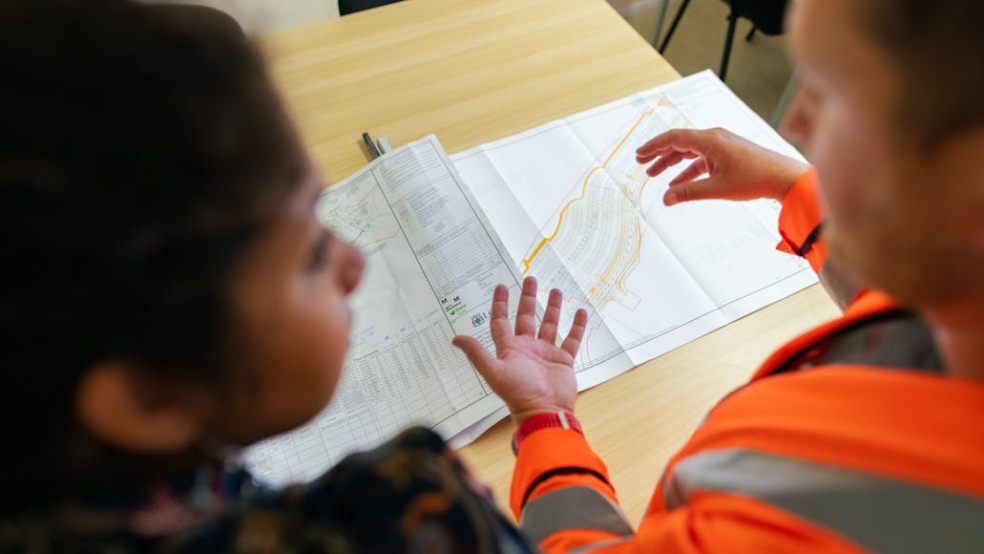
How to Plan an Effective On-Site Construction Office?
Setting up an on-site construction office might sound simple – place a container, connect Wi-Fi and call it a day. But in reality, anyone who has managed a busy site knows it requires careful planning. A construction office is the hub that keeps your project on track. While planning it, you must consider several important factors, including logistics, location, layout, access, and even staff morale.
This is where the site office comes in. The on-site construction office is the core of your site. It serves as the coordination point, problem-solving centre and sometimes the unofficial coffee place filled with your weary team members taking a breather. That’s not all; an organised on-site office also helps keep the project running smoothly!
Materials like the Norfolk aggregates you ordered come on time, meetings happen as planned, safety inspection checks happen without issue, and the project stays on track. Conversely, with a poorly organised office, even the best of staff experience miscommunications and delays.
So, how do you plan an effective on-site construction office? Let’s find out!
1. Pick The Right Spot
Location is key. Keep the office close enough to monitor site activities but away from dust, noise, and machinery vibrations. Create a small elevation, such as a gentle mound or a slightly raised platform. This can reduce the risk of flooding and make moving equipment easier. The office location's access points should also be taken into account, since deliveries must arrive at the site without interfering with your primary business operations.
2. Layout
When choosing the layout of your on-site office, make sure it supports the workflow and matches the way the site operates. A cramped office kills productivity, so consider proper planning, especially keeping in mind to include:
- Admin corners for paperwork
- Meeting rooms for briefing and client discussion
- Storage sections for blueprints, PPE and permits
- Crew lounge with amenities that make a world of difference
Here’s a tip – prebuilt modular welfare units, such as the 16-person unit with office setups, come ready to move in and are customisable, allowing your site to expand as needed. Depending on your project size and requirements, you might want to consider welfare units for hire.
3. Utilities & Safety
Power, lighting, internet connection, water, and heating or cooling are essential basics. A properly lit, climate-controlled office keeps morale up and reduces mistakes. Even small items, such as a kettle or coffee machine, can help facilitate comfort while working in a busy, chaotic environment.
Likewise, safety is also important. Within the office, you need lockers for sensitive documents, first aid kits within reach, and marked evacuation routes. CCTV or basic monitoring devices can also help deter theft, while proper fencing keeps site traffic in line.
When the office is secure and organised, the entire site benefits from a stronger sense of control and professionalism.
4. Communication
Communication is key to a smooth-operating construction site. Nothing derails a site faster than confusion over schedules, deliveries, or task assignments. Instead of having everything scattered, consider setting up a small digital corner with laptops or tablets where your team can log data on the go.
5. Quality
Quality is the baseline in construction and should not be considered a luxury. A high-quality setup prevents you from dealing with leaks, blown fuses, or repairs that drain your budget and time. This is why it’s important to ensure that your site office has strong walls, long-lasting fittings, solid wiring, and weatherproofing. These elements are not negotiable and go a long way in ensuring effectiveness.
6. Eco-Friendly
Construction sites aren’t exactly gentle on the planet. Heavy machinery, constant deliveries, and energy-hungry tools: these footprints add up quickly. Consider incorporating eco-friendly practices in your site’s construction office. Start with easy fixes like having recycling bins, installing insulation that prevents your heaters and air conditioners from running constantly, and using energy-efficient lighting. You can make your green foot stronger in this way.
In Conclusion
Although construction work is difficult, it can be managed more easily with a well-functioning site office. Take the time to plan your on-site construction office properly, thinking about layout, access, utilities, and comfort. A well-structured office keeps paperwork in order, the crew motivated, and projects aligned.

















